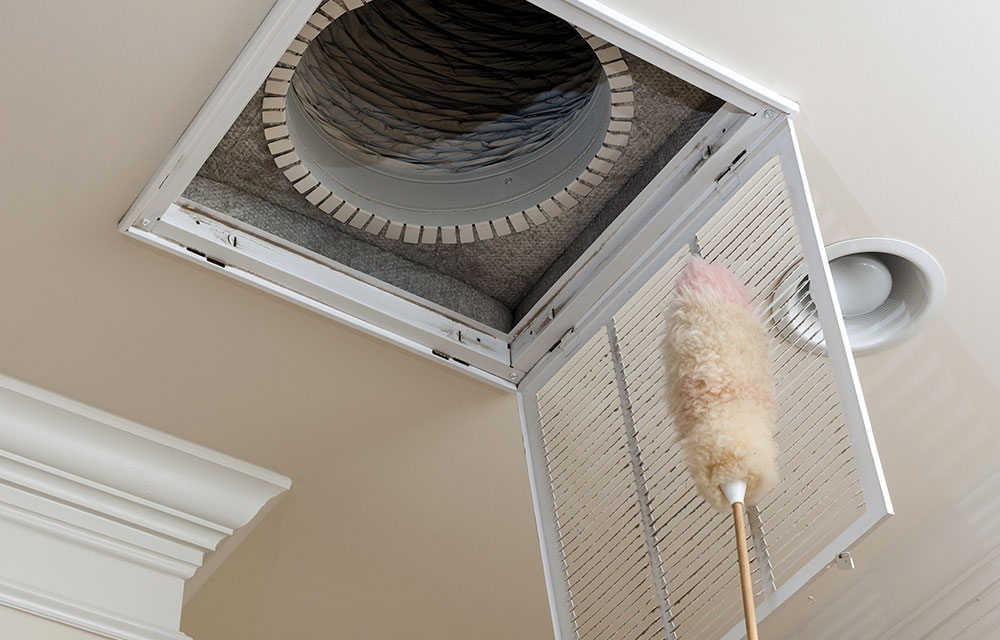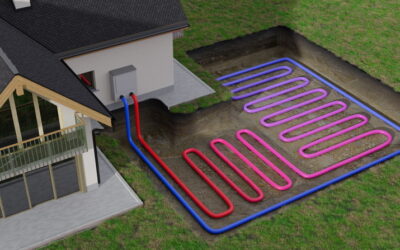Breathing polluted air can make you feel lethargic, sick, and energy-depleted. If your home environment seems stuffy or sticky during the spring and summer months, and you struggle with allergy symptoms in spite of avoiding outside activities, you should consider improving your indoor air quality (IAQ).
Here are nine tips for improving the IAQ in your home:
1. Change Your Air Filter
Your air filter serves two particularly important needs as part of your comfort control system. It captures airborne particles to keep them out of the airstream and out of your lungs. A dirty filter loses its efficiency, meaning that particulates can continue in circulation, settling throughout your home on furnishings and fixtures. At the same time, your filter is supposed to keep the interior of your air handler clean so that your cooling system operates efficiently. A dirty filter can allow material to settle on your coils and blower, leading to the potential for biomaterials like mold and bacteria to develop and contaminate your air supply. Don’t start your equipment for the season without a clean filter, and check each month to ensure that a prompt change is completed.
2. Schedule Preventative Maintenance
Annual AC tune-up includes cleaning of your system’s indoor parts that affect your IAQ. Coils and blower parts are particularly important. As these components are cleaned, you will also benefit from enhanced system efficiency and cooling performance. A spring appointment is important to make sure that you’re A/C equipment is ready to run at full capacity by the time you need it.
3. Duct Inspection and Cleaning
Your ducts can collect a great deal of dirt and debris, but the condition may be missed because you can’t see the interior walls of your ductwork. However, cleaning services every three to five years are helpful for ensuring that your ducts are clear of obstruction and free from leaks. Duct services can also improve your home’s energy performance by reducing energy loss through leaks.
4. Develop A Green Thumb
Many houseplants provide assistance with the quality of your air supply by filtering out gaseous pollutants. Most air filters address solid particles, but the pollution in your home can include emissions from laundry products, office supplies and construction materials. Look for plants that will accent your home decor while removing the most serious pollutants.
5. Air Seal to Keep Particles Out
Leaks in your home can allow those outside materials to infiltrate. If you aren’t gaining much relief from your allergies by staying inside, you may want to inspect your windows, doors and other breaches in your exterior walls to determine whether leaks are an issue. Caulk and weather stripping are affordable materials, and you can remove and replace old, brittle material with just a little effort. Keep these supplies handy to deal with new leaks as they are noticed.
6. Ventilate Your Home
Air sealing can lead to a stuffy home, and an exchange ventilation system may be helpful for freshening things up. An energy recovery ventilator brings fresh air in while removing stale, polluted air from your residence. Incoming pollutants are filtered at the ventilation box, limiting the influx of irritating materials. An ERV also recaptures cooling energy from the exhausted air.
7. Install an Electric Air Cleaner
If you are particularly sensitive to mold or susceptible to colds and other illnesses, the germicidal qualities of an electric air cleaner may be excellent for helping you stay healthier. Germicidal units trap and kill biomaterials like viruses, mold, and bacteria, limiting your exposure and helping you to breathe easier.
8. Consider Alternative HVAC Equipment
Some homeowners find that ductless mini systems are excellent for enjoying improved air quality. Individual units in different rooms allow those spaces to be heated and cooled independently of others. This also means that the air in a given space isn’t coming into contact with common germs and pollutants throughout the house. Rather, the air in the space moves through its own air handling unit and is filtered independently. Eliminating ducts from the comfort equation can make a dramatic difference in indoor air quality.
Others find that advanced technologies allow for more careful control of issues like humidity. Variable speed systems allow for ultra-low fan speeds so that dehumidification can occur without excessive cooling. This can be beneficial during milder temperature conditions when heating and cooling aren’t needed but when humidity can be a problem.
9. Have an IAQ Inspection
The experts at Berkeley Heating & Air Conditioning are available throughout the year to test the quality of air in your home. We can provide important maintenance and cleaning services, but an indoor air quality inspection may provide the most precise information about the nature of the pollutants in your residence. Contact our customer service representatives to discuss your concerns or to schedule an appointment today.




